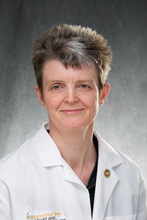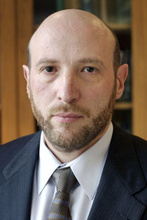Artificially stimulating heart rate protects the heart from injury, reproducing a key benefit of exercise, according to a new University of Iowa study.
Exercise is one of the most powerful modifiers of cardiovascular risk, with proven benefits for both those with healthy and those with diseased hearts. These benefits are produced through multiple biological mechanisms, but the new study suggests that simply recreating one aspect of exercise—the elevated heart rate pattern—may provide a significant protective effect.


The magnitude and duration of exercise-related heart rate acceleration is a reliable measure of whether a particular physical activity and its intensity are sufficient for cardiovascular conditioning. The new study, led by Leonid Zingman, MD, and Denice Hodgson-Zingman, MD, and published in the journal EP Europace, showed that the heart rate acceleration pattern of exercise not only reflects the intensity of a cardiac workout, but on its own can significantly contribute to cardiac conditioning.
The UI team demonstrated these findings in a mouse study that used atrial pacing to re-create a heart rate pattern that mimics a session of exercise. The atrial pacing, delivered by pacemaker technology, is designed not to cause any dyssynchrony - a mismatched pulsing of the heart chambers which can be damaging. The “pacing” protocol – increasing the heart rate, keeping it elevated for a while, and then “cooling down” to baseline – strengthened the mouse hearts and protected them from ischemic injury when it was repeated daily over a 10-day period.
“The study suggests that when the pacemaker increases heart rate, it changes how calcium is forced in and out of cells, which can act as a signal that prompts the heart to adapt in a way that is similar to its response to physical exercise,” explains Zingman, UI associate professor of internal medicine-cardiovascular medicine. “These changes make hearts better able to tolerate stress and therefore more resilient.”
“We're not saying that you can replace exercise with a pacemaker, but this may be good for people with cardiovascular disease who can't do regular exercise maybe because they have arthritis, or they're frail, or they have other medical conditions that prevent them from doing cardiac rehabilitation,” adds Hodgson-Zingman, UI professor of internal medicine-cardiovascular medicine.
One reason the UI team is excited about the potential for testing this idea in people is that many people with weak or failing hearts already have a pacemaker or a defibrillator implanted to help maintain normal heart rhythm. With some modifications, these existing devices could be optimized to deliver this exercise-inspired pacing, which might improve clinical outcomes and symptoms.
“We're talking about using that same device to induce some favorable cardiac changes and increase the heart’s resilience to stress,” Zingman says. “Improving cardiovascular conditioning can significantly improve a person’s ability to perform daily functions, which can make a huge difference in people’s quality of life.”
The next step is for the team to test the pacing protocol in people. The researchers have been granted a US patent related to this approach and are currently enrolling patients who have heart failure symptoms and difficulty doing normal daily activities and who also have an implanted pacemaker. The study will compare cardiovascular outcomes in one group of study participants who receive the pacing pattern three days a week for a month with another group of patients who will not receive the pacing.
In addition to Zingman and Hodgson-Zingman, the UI research team included Zhiyong Zhu, Zhan Gao, Biyi Chen, Duane Hall, Rachel Minerath, Olha Koval, Ana Sierra, Ekaterina Subbotina, Xiaoyi Zhu, Young-Rae Kim, Jun Yang, Isabella Grumbach, Kaikobad Irani, Chad Grueter, and Long-Sheng Song.
The research was supported by grants from The National Institutes of Health, the Veterans Affairs Merit Review Program and the Roy J. Carver Charitable Trust